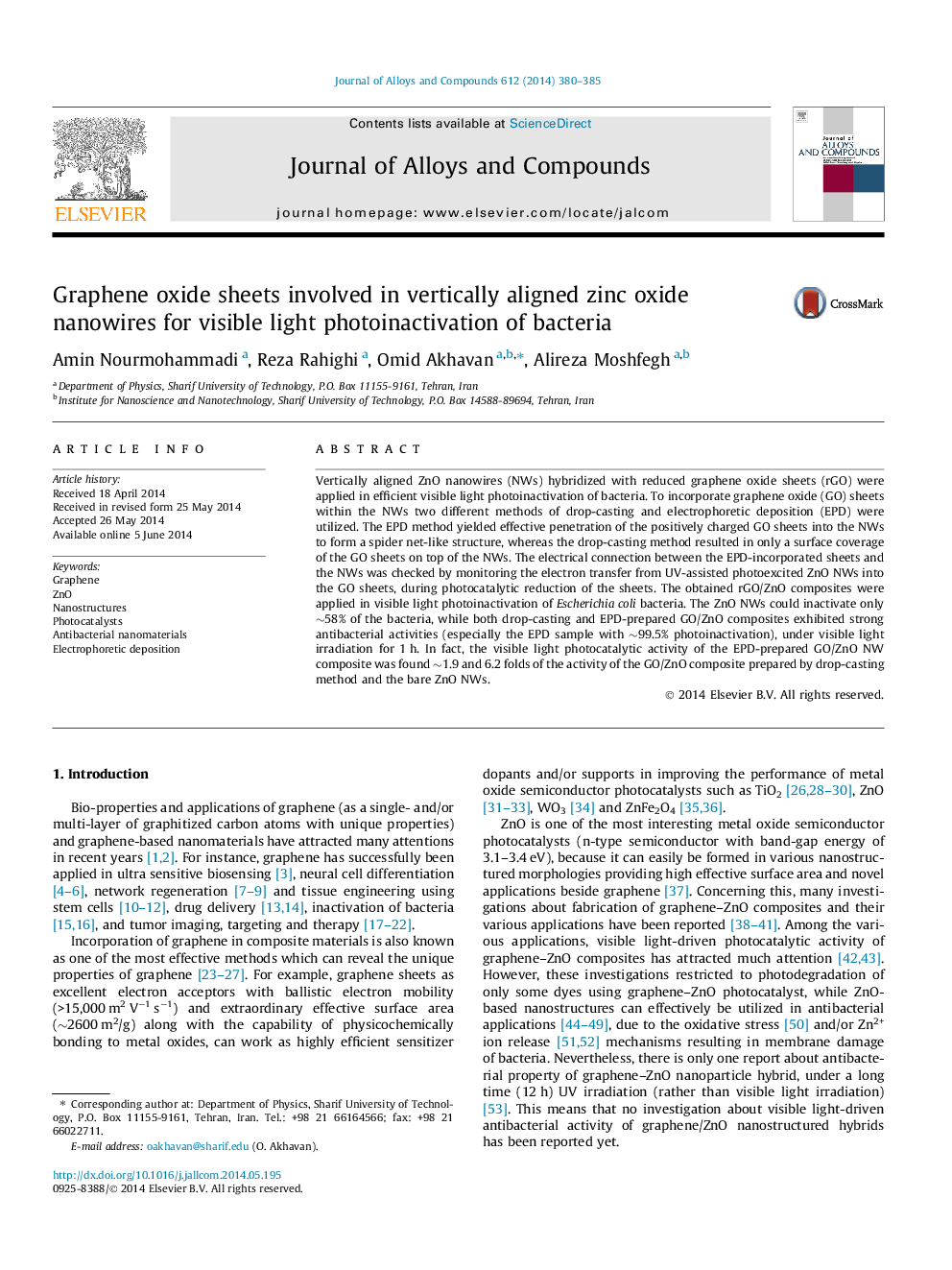| Article ID | Journal | Published Year | Pages | File Type |
|---|---|---|---|---|
| 1610767 | Journal of Alloys and Compounds | 2014 | 6 Pages |
Abstract
Vertically aligned ZnO nanowires (NWs) hybridized with reduced graphene oxide sheets (rGO) were applied in efficient visible light photoinactivation of bacteria. To incorporate graphene oxide (GO) sheets within the NWs two different methods of drop-casting and electrophoretic deposition (EPD) were utilized. The EPD method yielded effective penetration of the positively charged GO sheets into the NWs to form a spider net-like structure, whereas the drop-casting method resulted in only a surface coverage of the GO sheets on top of the NWs. The electrical connection between the EPD-incorporated sheets and the NWs was checked by monitoring the electron transfer from UV-assisted photoexcited ZnO NWs into the GO sheets, during photocatalytic reduction of the sheets. The obtained rGO/ZnO composites were applied in visible light photoinactivation of Escherichia coli bacteria. The ZnO NWs could inactivate only â¼58% of the bacteria, while both drop-casting and EPD-prepared GO/ZnO composites exhibited strong antibacterial activities (especially the EPD sample with â¼99.5% photoinactivation), under visible light irradiation for 1Â h. In fact, the visible light photocatalytic activity of the EPD-prepared GO/ZnO NW composite was found â¼1.9 and 6.2 folds of the activity of the GO/ZnO composite prepared by drop-casting method and the bare ZnO NWs.
Related Topics
Physical Sciences and Engineering
Materials Science
Metals and Alloys
Authors
Amin Nourmohammadi, Reza Rahighi, Omid Akhavan, Alireza Moshfegh,
